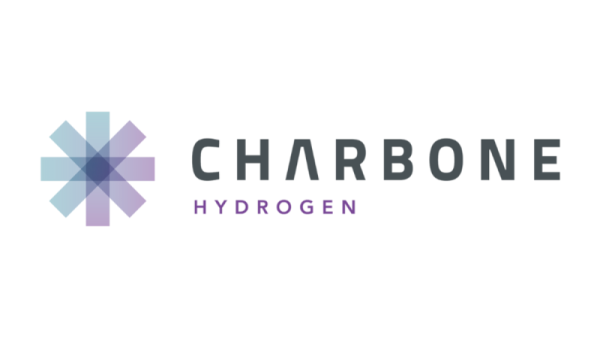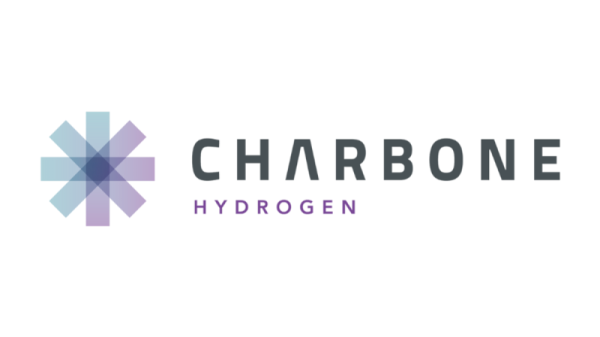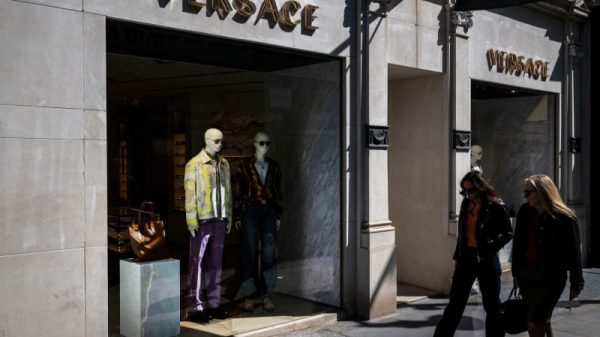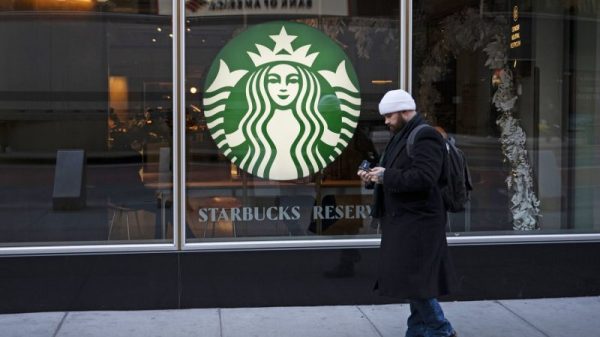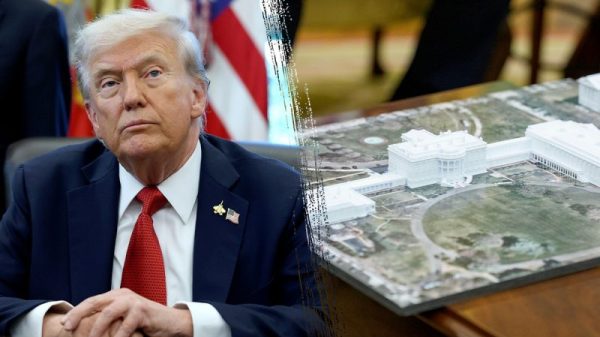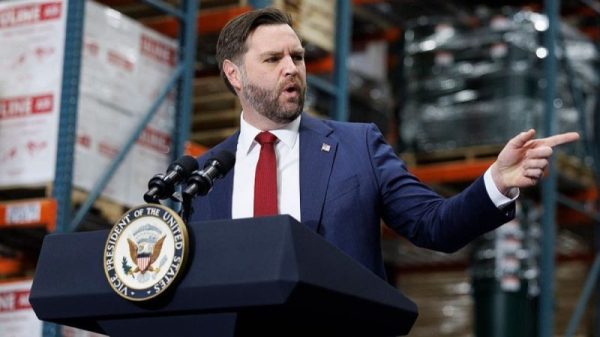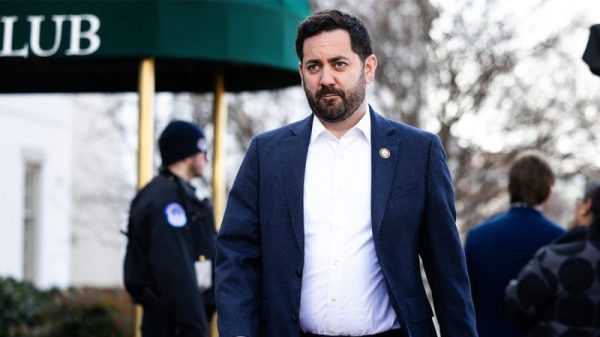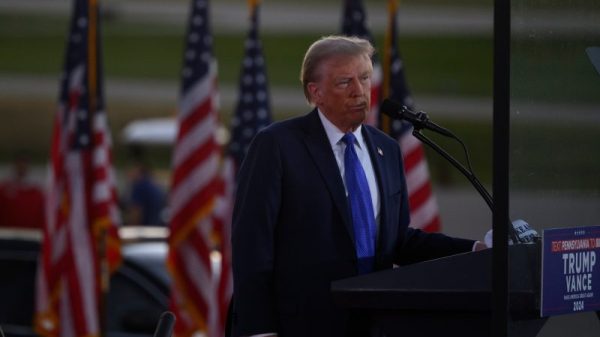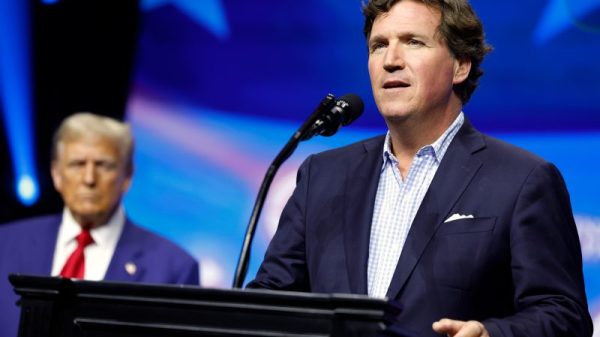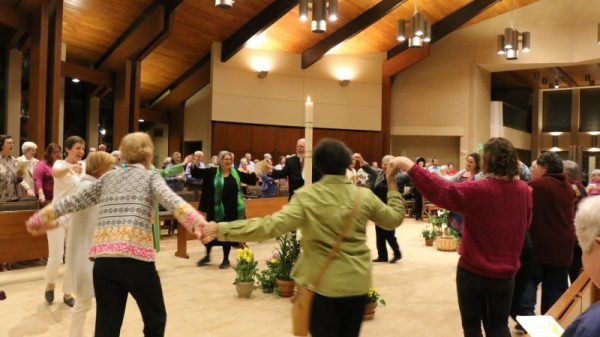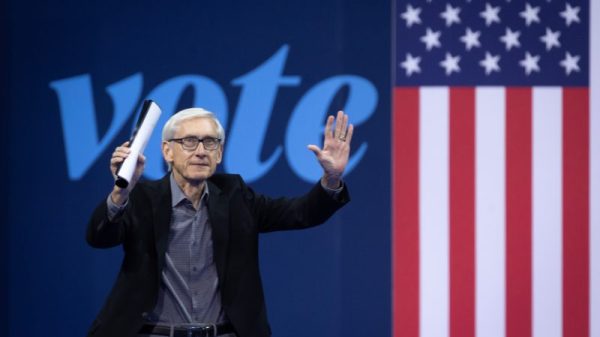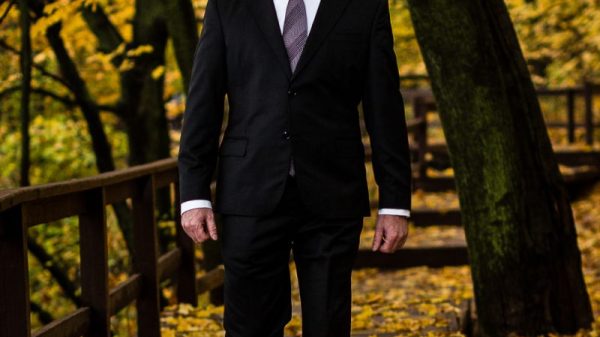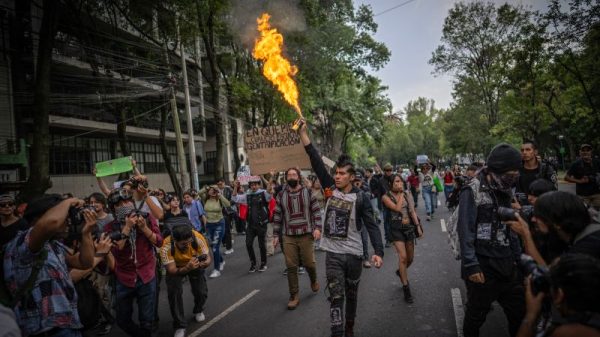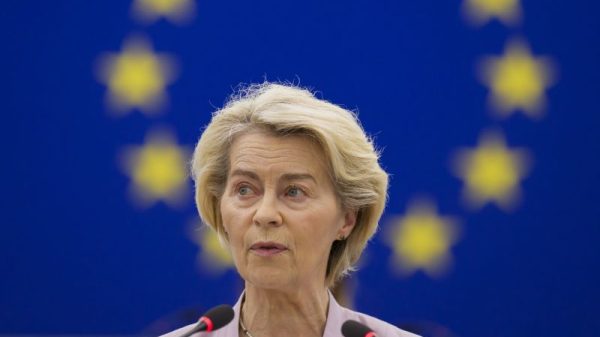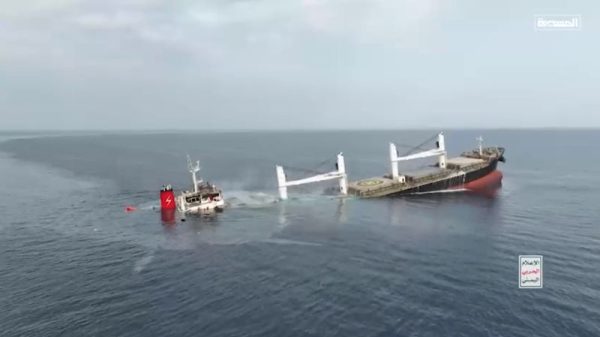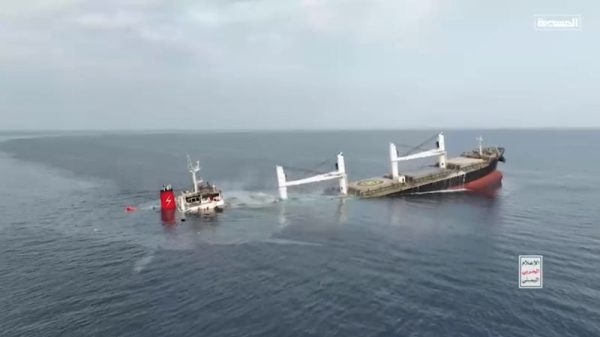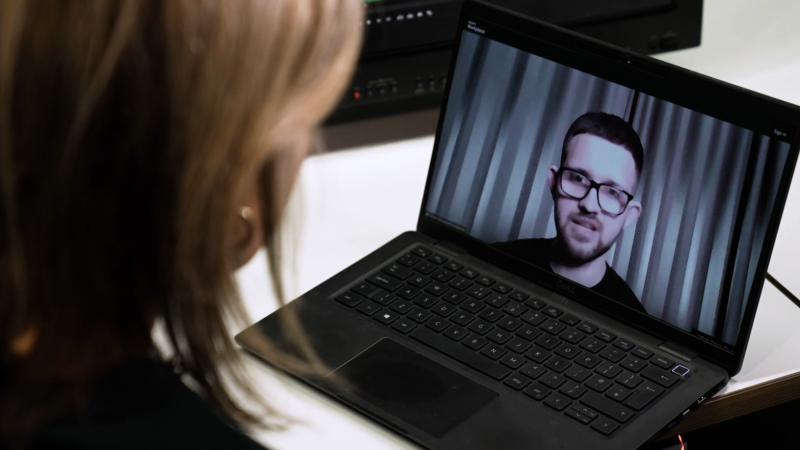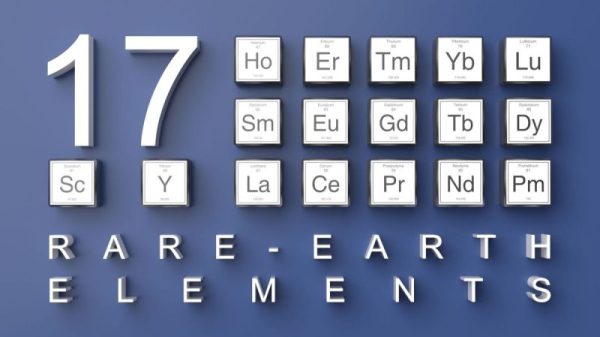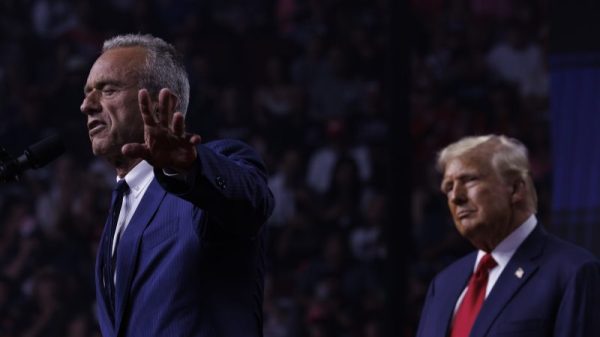Three years after it seized control of Mariupol following a brutal 86-day siege, Russia is using a more subtle power to keep its grip on the Ukrainian port city: social media influencers.
Though their follower counts and overall reach pale in comparison to celebrity influencers, experts say that the Kremlin needs local voices to effectively promote life under Russia’s rule.
“Just look what Russia is getting up to in Mariupol,” Pavel Karbovsky, a teacher at one of the blogger schools, said in a recent TikTok video highlighting the construction of new apartment buildings. “Wait, they’re building, not demolishing… this is Mariupol, our Russian town!”
But Russian-backed occupation officials have been actively encouraging creators like Karbovksy to post about the restoration of the “liberated” territories, including in official meetings.
In January, Karbovsky was among a group of content creators invited to meet with Denis Pushilin, the Russian-backed head of the Donetsk People’s Republic (DPR). Pushilin said in a statement on Telegram that he was “counting” on the group to spread the word that the eastern Donbas region was “being revived.”
“We are all united by an immense desire to restore and revive Donbas. And people should know as much information as possible about the large-scale work that is already underway,” the post continued.
But absent from their videos is any context on the reason for rebuilding.
Russia’s siege of the port city, once known as a hub for trade and manufacturing, was one of the deadliest and most destructive battles since Moscow launched its full-scale invasion of Ukraine more than three years ago.
According to United Nations estimates, 90% of residential buildings were damaged or destroyed in Mariupol during Russian attacks, and around 350,000 people out of the pre-war population of about 430,000 were forced to flee. Ukrainian President Volodymyr Zelensky said in a recent interview that 20,000 civilians are believed to have been killed, though the death toll is impossible to verify. Ukrainian officials accused Moscow of trying to cover up evidence of civilian casualties, a claim the Kremlin denies.
For Moscow, maintaining control of Mariupol remains a strategic priority and a focus of significant investment. “We are paying a lot of attention to Mariupol,” Russian President Vladimir Putin said during his annual press conference in December. In March 2023, he staged a highly choreographed trip to the city, discussing “restoration” efforts with local officials. In a video that circulated online of him meeting residents, a voice off-camera could be heard shouting: “It’s all lies, it’s just for show.”
Training new voices
In September, an organization called the Donbass Media Centre (DMC) opened its “blogger school” in Mariupol. It offers free two-week courses designed to give aspiring influencers a technical grounding in skills like filming and editing, as well as an understanding of how to gain popularity and make money online.
Similar courses had already been held in Donetsk and Luhansk, and another followed in Melitopol, in the Russian-occupied part of Zaporizhzhia. Karbovsky was one of the teachers.
The DMC was set up by Donbass Media, a pro-Russian news channel mostly operating on social media. In 2024, the DMC won a Runet Prize, a national award of the Russian Federation and Presidential Foundation for Cultural Initiatives that celebrates excellence on the Russian internet. It also has a partnership with “Top Blog,” a competition for content creators run by a Kremlin program called “Russia – Land of Opportunities.” Last year, the most successful DMC students won a trip to Moscow to visit the headquarters of Vkontakte, Russia’s version of Facebook.
Vkontakte is among several Russian social media networks owned by state-run Gazprom-Media. The Kremlin has clamped down its control of social media in recent years, through ownership, internet slowdowns, and, more recently, legislation requiring influencers with over 10,000 followers to register their personal details with Russia’s media regulator, Roskomnadzor.
Karbovsky said the DMC’s aims are not political. “DMC does not have any such goal to create some sort of propagandists – no way. We don’t need this,” he said. “We want people to be able to share their different views about what is happening in the DPR (Donetsk People’s Republic) and the LPR (Luhansk People’s Republic) and other regions.”
The same month the DMC opened its “blogger school” in Mariupol, graduates of a Russian government program called “The New Media Workshop” opened a media center in Mariupol to teach schoolchildren 14- to 17-years-old photography, filming and how “to work in the social networks.” The free program is funded in part by a Russian presidential grant worth around $12,000. Participants are encouraged to show the positive side of Mariupol.
“We look forward to welcoming talented kids, so together we can talk about the life of our beloved city,” reads an October Telegram post from the media center. In another, a participant in the course interviews children about how Mariupol has changed. “It’s become much more interesting, more colorful,” says one young girl. “It’s developing quickly,” her friend adds.
In March, Rutube – an alternative to YouTube owned by Russia’s Gazprom-Media – announced it was setting up “studios” in cities and towns across the four annexed regions, including in Mariupol, where content creators could access high-tech equipment and training programs. The initiative is part of a joint project with the Russian Military Historical Society, which Putin created by presidential decree in 2012 to “counter attempts to distort” Russia’s military history.
“The world now really needs the truth about the lives of the new Russian citizens who have gone through a lot… but chose to speak Russian, think and dream in Russian,” one of the organizers said in a press release.
Subtle messaging
One of her most popular recent videos, with over 177,000 views, is a montage of both damaged and rebuilt buildings in the city set to a voice-over that states: “Mariupol – the seaside capital of Southern Russia.”
“Look how beautiful,” another content creator, known as “Masha from Mariupol,” says in a TikTok video showing off newly built apartment blocks at sunset. “These apartments are filled with happy people… a wonderful region for family life.”
In other clips, she poses in front of a war memorial, gives a tour of the reopened railway station and shows off construction at the Drama Theater, where hundreds of civilians were killed in a Russian airstrike.
“They are approachable,” he added.
“You cannot use automatically the voices which are familiar for the Russians who live in central Russia or Siberia or Moscow, you need to find local voices who understand how to talk to people who live in these territories,” he said.
A ‘Potemkin’ village
Shiny rooftops of restored, or in some cases newly built, apartment blocks are visible dotted in and around the city center, having mostly replaced buildings destroyed in the war, satellite images from late 2024 show.
But in other areas the scars of the conflict are still visible.
In a satellite image from December last year, a crane can be seen next to the Drama Theater, where the Russian word for children, ДЕТИ, was scrawled in the spring of 2022 – a failed attempt to deter Russian bombs. Russian state media has reported that the theater will be finished this year.
In December, Putin claimed in a press conference that at least 300,000 people had returned to Mariupol and said, “the population continues to grow at a rapid pace.” In March, he signed a decree ordering all residents of the four regions to get a Russian passport by September 10 or leave.
Boichenko said he believes Russians are being lured there not only through positive news stories and social media posts, but also by Russia’s preferential 2% mortgage rate for its “new territories” – a significant draw in a country where market rates are currently as high as 29%.
Russia has promised to provide “compensatory housing” to everyone affected by the war, but in videos circulating mainly on Telegram, groups of Mariupol residents claim they still have not received their apartments and deliver direct appeals to Putin for homes.
In one video that surfaced in January, some hold up a sign that reads “БОМЖИ,” a Russian acronym meaning “homeless people.” One person says they are being offered apartments belonging to residents who left Mariupol. “We earned our apartments, we don’t want other peoples,” she says, urging the authorities to continue building. The Russian-installed mayor of Mariupol has said some residents will be given “abandoned” properties, effectively stripping those who left the ability to return.
The newly built Nevsky neighborhood that Putin visited in 2023, for example, is not connected to the sewage system, they said.
They added that the posts from content creators do not accurately portray reality in Mariupol. “It is targeted at people who do not live (in Mariupol) and do not know this entire situation,” the woman said.
And pro-Russia content creators can’t rewrite history, Boichenko added. “This propaganda, these made-up clips that they are doing now in Mariupol, will not help. Russia has committed a crime in Mariupol, and the people of Mariupol know it,” he said.




